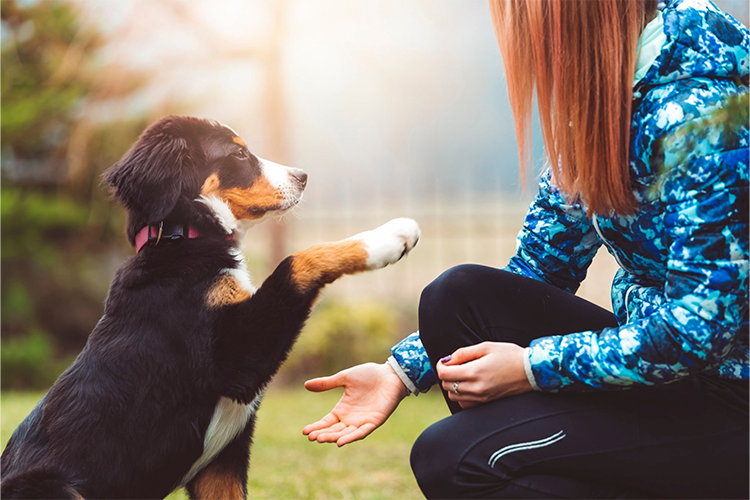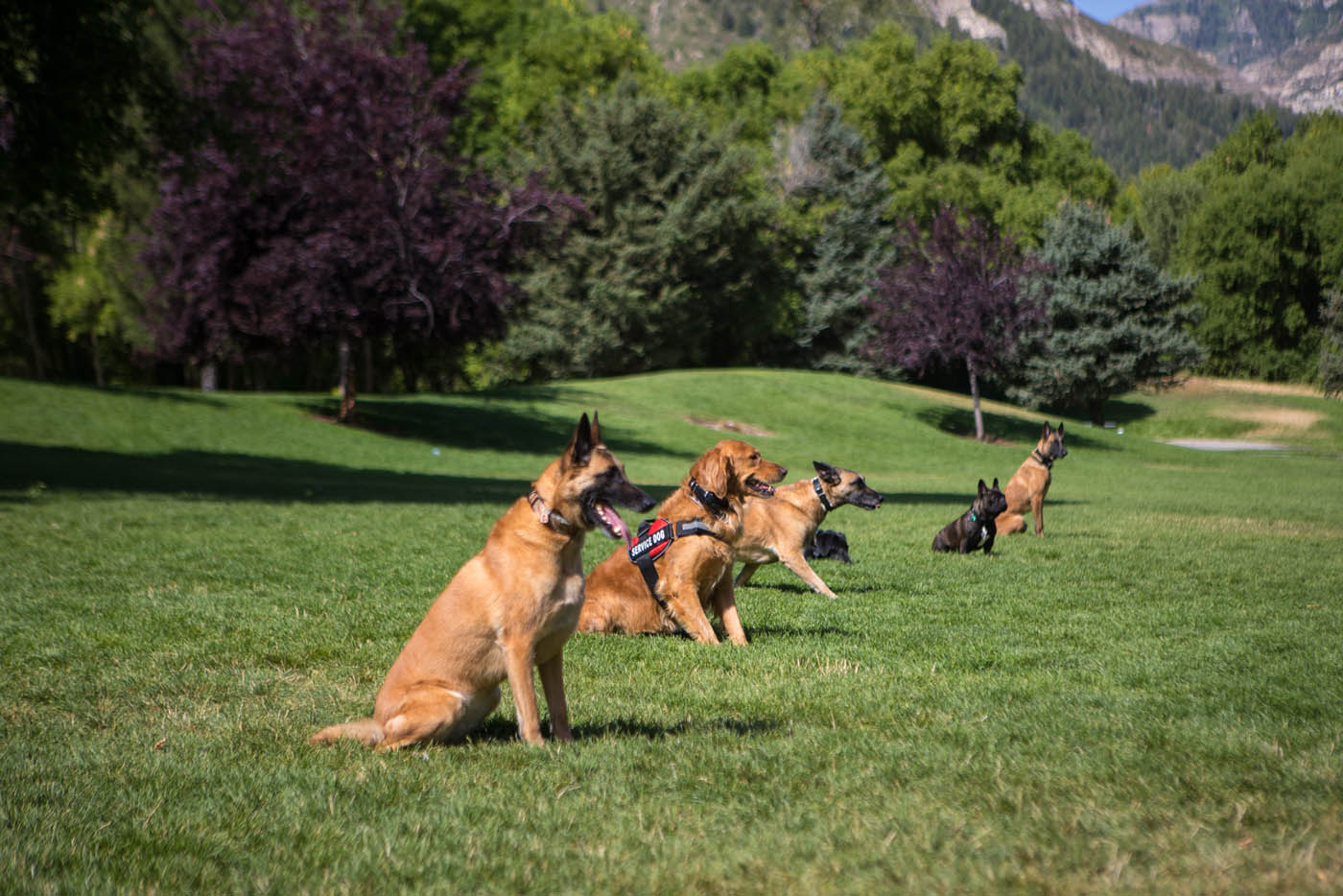Common Mistakes to Avoid During Dog Training for Better Results
Common Mistakes to Avoid During Dog Training for Better Results
Blog Article
Newbie's Overview to Successful Dog Training in the house
Efficiently training a pet in the house needs a nuanced understanding of canine habits and efficient communication approaches. Developing clear training goals, utilizing premium rewards, and maintaining uniformity across family participants are essential elements. Integrating training into daily regimens can enhance both involvement and retention. Numerous novice fitness instructors run into challenges that may prevent progression. To browse these intricacies successfully, it's necessary to check out several vital facets that can transform your technique and lead to a harmonious partnership with your animal. What basic principles should every beginner understanding to ensure success?
Understanding Canine Behavior
Recognizing canine habits is crucial for effective training and cultivating an unified partnership in between human beings and their canine friends. Dogs communicate primarily through body movement, articulations, and facial expressions, making it essential for owners to translate these signals precisely. Acknowledging behaviors such as tail wagging, growling, or cring can give understandings into a canine's emotional state and objectives.

Typical behavioral concerns, such as aggression, anxiousness, or excessive barking, usually come from misconceptions or unmet needs. Observing and attending to these concerns quickly can stop rise and ensure a positive training experience. By promoting a deep understanding of pet behavior, owners can tailor their training approaches to suit their canine friends, inevitably bring about a well-behaved and pleased pet dog.
Vital Educating Devices
A well-equipped training room can substantially improve the performance of canine training in the house. Important training tools guarantee that both the pet dog and the instructor can participate in effective sessions that cultivate discovering and bonding.

Spending in a strong leash and a comfortable, well-fitting collar or harness is important for safety and control. These devices help develop borders and make sure the canine continues to be secure during training. In addition, a marked training location, without interruptions, aids focus for both the canine and the instructor.
Training help such as training pads, cones, or agility devices can also boost the experience by introducing range and challenges. Lastly, having a note pad or electronic app for tracking progression can be very useful, enabling you to keep in mind successes and areas for renovation. Using these essential devices will produce a favorable training environment and lay the foundation for reliable understanding.
Producing an Educating Routine
Establishing a constant training regimen is vital for effective dog training at home. A well-structured routine not only aids in reinforcing preferred habits yet also supplies your pet dog with a complacency and predictability. To produce an effective training routine, begin by identifying specific training objectives, such as basic commands, leash walking, or housebreaking.
Pick an assigned time every day for training sessions, preferably when your pet dog is sharp and receptive. Procedure needs to be brief, approximately 5 to 15 minutes, to maintain emphasis and avoid exhaustion. Uniformity in timing and atmosphere will certainly improve your pet's discovering experience.
Integrate training into everyday tasks to enhance abilities. Technique commands during walks or mealtime, which incorporates learning into natural regimens. Furthermore, stay versatile and change the routine as necessary, suiting your pet dog's power levels and state of mind.
Favorable Reinforcement Methods
Positive reinforcement strategies are essential to reliable dog training, promoting desired actions via rewards instead than punishment. This approach utilizes favorable stimulations, such as treats, appreciation, or playtime, to encourage pets to repeat certain actions. The cornerstone of this approach is timing; incentives ought to be offered immediately adhering to the preferred behavior to produce a clear association.
When carrying out positive support, it is important to pick rewards that are inspiring for your canine. High-value deals with, such as small pieces of chicken or cheese, can be specifically effective throughout training sessions. Furthermore, differing the benefits can keep your dog's passion and excitement.
Start with basic commands, like "sit" or "stay," and progressively development to extra complex tasks. Uniformity is essential; guarantee that all relative utilize the same commands and benefit systems to stay clear of confusion.
Additionally, it is vital to stay individual and avoid frustration. Pet dogs, like human beings, learn at their very own pace. By promoting an encouraging training environment with positive support, you can boost your canine's discovering experience while strengthening the bond in between you and your hairy companion, laying the groundwork for successful training end results.
Usual Training Challenges
While training a canine in your home can be a rewarding experience, it usually comes with a collection of typical difficulties that can examine both perseverance and uniformity. One widespread issue is diversion. Pet dogs might come to be quickly averted by sounds, activities, or also scents in their setting, making it hard to keep their emphasis throughout training sessions.
One more obstacle is incongruity in commands and support. If relative utilize various signs or rewards, it can prevent and confuse the pet progression. Establishing a unified strategy is vital for reliable interaction.
Furthermore, pet dogs can experience stress or stress, particularly if they do not recognize what is anticipated of them. This can bring the original source about unfavorable behaviors, such as barking or chewing.
Lastly, the timing of support is important (Dog training). Delayed rewards can decrease the efficiency of favorable support, as canines may fail to attach the habits with the reward
Getting over these obstacles calls for commitment, clear interaction, and a structured training strategy. Recognizing and addressing these usual obstacles will certainly lead the way for a more successful and pleasurable training experience in the house.
Verdict
To conclude, successful dog training in your home necessitates a detailed understanding of canine habits and efficient communication approaches. By developing clear training goals and making use of high-grade deals with together with favorable support, the training process comes to be extra fulfilling for both the instructor and the pet dog. Persistence, consistency, and versatility are important parts that facilitate discovering. Inevitably, incorporating training right into everyday routines improves the bond between pet dog and proprietor, making the experience both delightful and efficient.
Developing a regular training routine is essential for efficient canine training at home.Positive reinforcement methods are essential to efficient pet dog training, promoting preferred anonymous actions via rewards instead than punishment (Dog training). By promoting an encouraging training atmosphere with positive support, you can important link improve your canine's learning experience while enhancing the bond between you and your furry buddy, laying the foundation for successful training results
In verdict, successful pet dog training at home requires a thorough understanding of canine behavior and reliable communication approaches. By establishing clear training goals and using premium treats alongside favorable reinforcement, the training process comes to be much more fulfilling for both the trainer and the pet dog.
Report this page